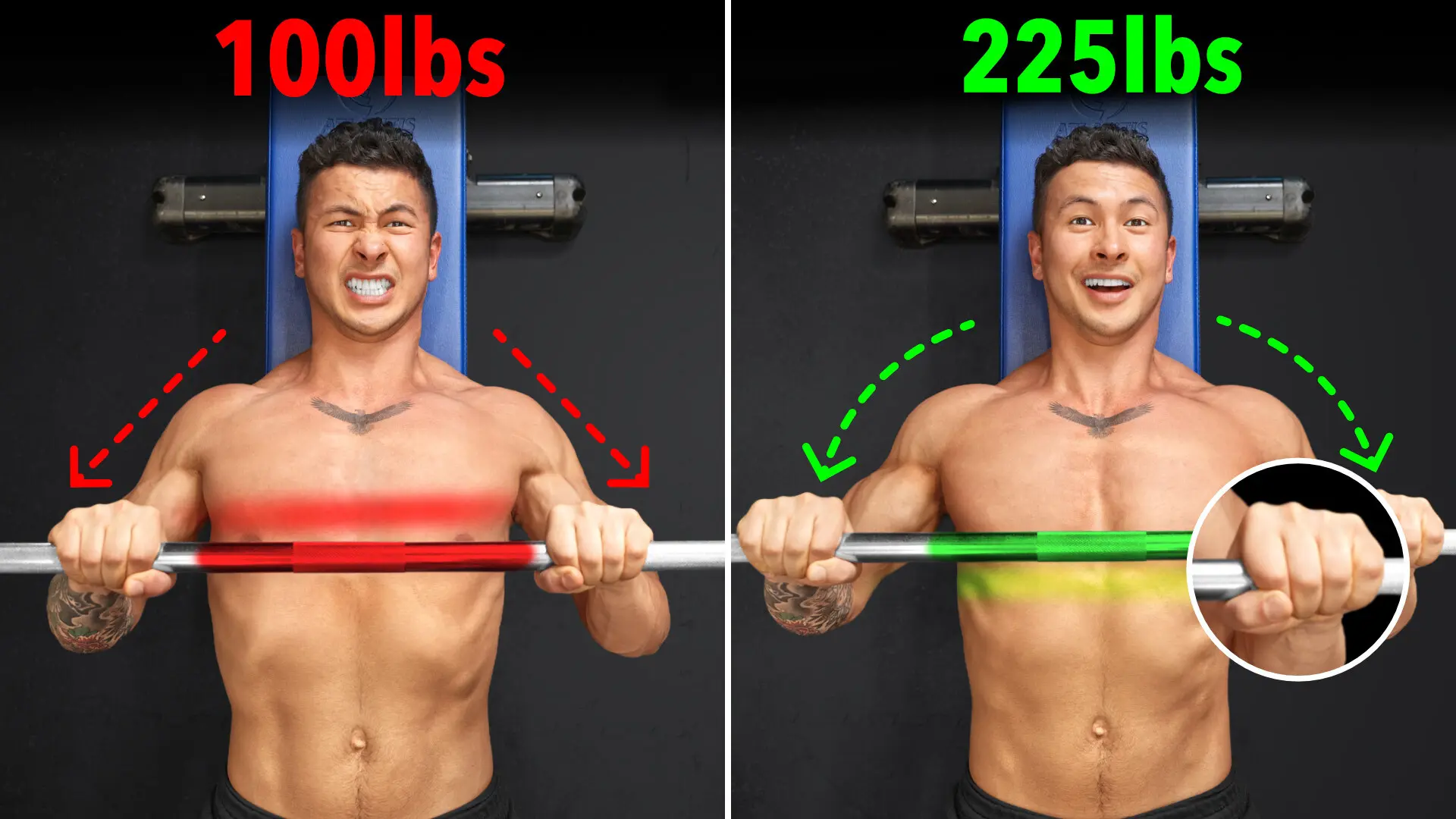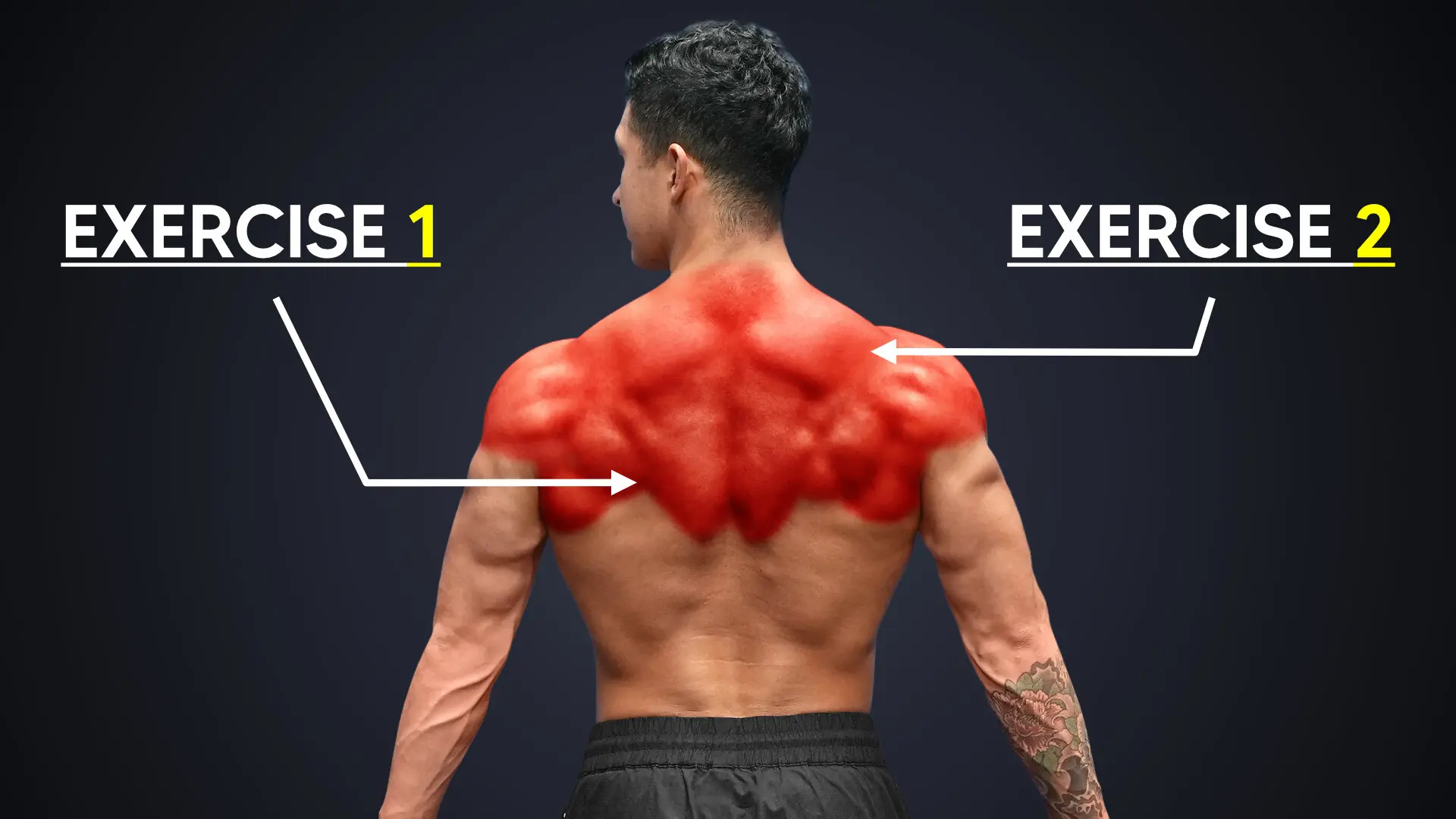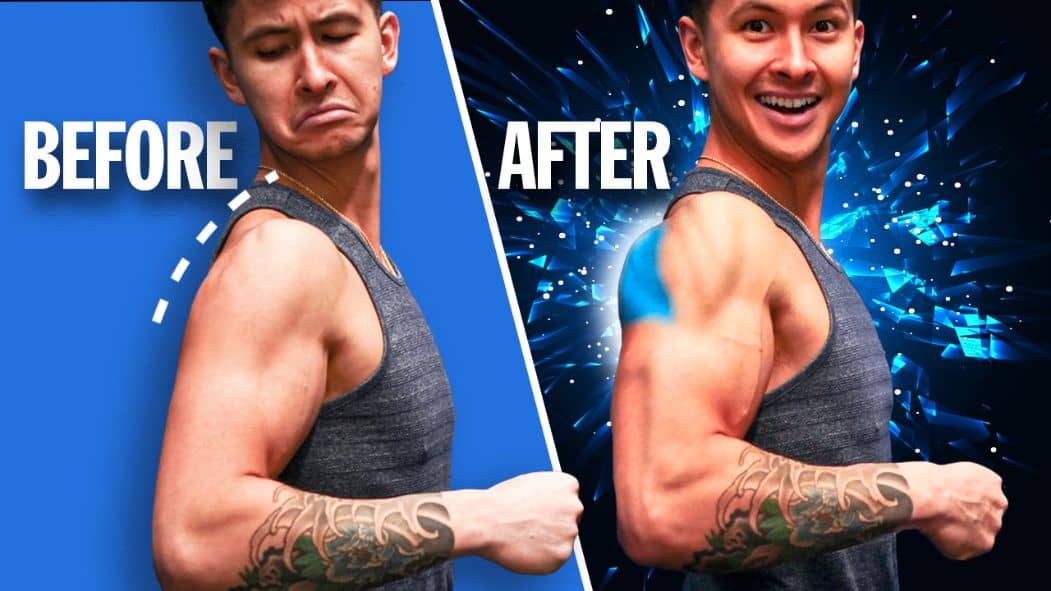
Blow Up Your Rear Delts (3 Quick Exercise Tips For Faster Gains)
Want bigger, stronger-looking shoulders? Then you can't afford to neglect the rear delts. In this article, I cover the 3 exercise tips you need to apply that'll truly blow up your rear delts gains.
Today, I’m going to show you how to grow your rear delts fast with 3 simple exercise tips that you can apply right away. But before we dive into the tips, let’s first do 2 things:
- Breakdown what, exactly, the rear delts are AND
- Look into the possible reasons yours are probably lagging behind
But of course, if you’re not just looking to develop your rear delts, then you’d benefit from one of our programs. These go through, step-by-step, how you can develop a well-rounded physique. If you’re interested:
Click the button below to take my analysis quiz to discover the best program for you:
↓
What Are "Rear Delts"? Why Is It Often Underdeveloped?
As the name implies, the rear delts are the “rear head” or “back muscle” of the 3-headed shoulder muscle. They’re the key to rounding out the shoulders. That's because they add an impressive cap to the back of the shoulders.
Unfortunately, though, most peoples’ rear delts look like this: underdeveloped, with the front delts being disproportionately overdeveloped in comparison.
Why does this happen? Well, this is because we tend to do:
- A ton of pressing work that develops the front delts BUT
- Very little work for the "backside" of the shoulders
Another reason? Even when we do decide to work on them, the exercises that we choose (e.g., reverse flies) just aren't very effective at hitting the rear delts. But why is this the case? And what exercises should you do instead?
Let’s figure that out with tip #1.
Tip 1: Arm Position
So, if you’re like most lifters, then you probably rely on the following to grow your rear delts:
- Rear delt flies
- Reverse fly machine
- Facepulls
But while these do train the rear delts (to some extent, at least), they aren't the best options. This is because your arm is held straight out to the sides during these movements. In turn, creating 2 problems:
- Lining-up of muscle fibers: This horizontal arm posiiton lines up much better with the upper back muscle fibers (e.g., the mid-traps) than it does the rear delts, which run more diagonally.
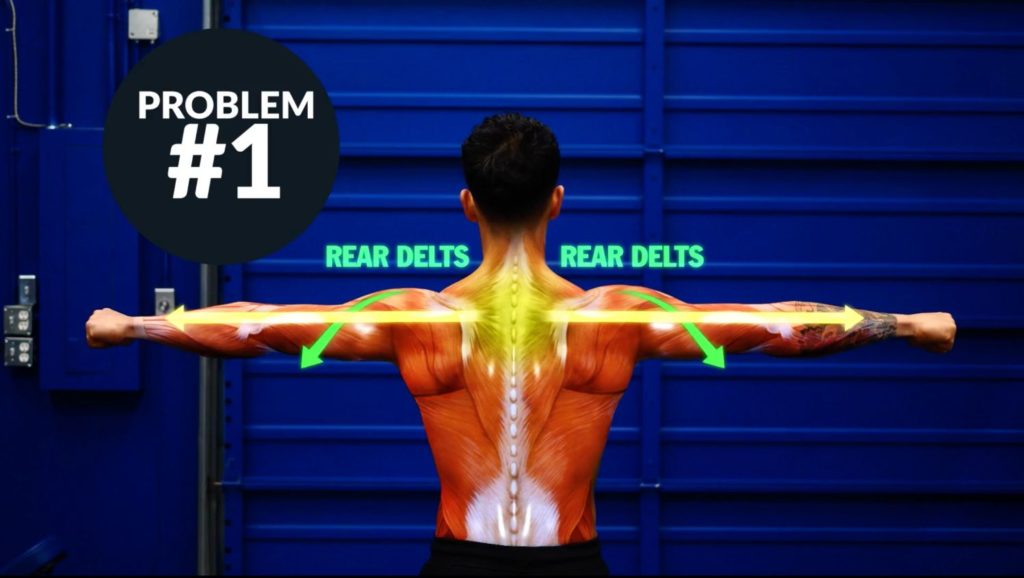
- Elbow path: The further the elbow can move behind the body, the better the rear delts can be activated. But with a horizontal arm position, your elbow can't get very far back.
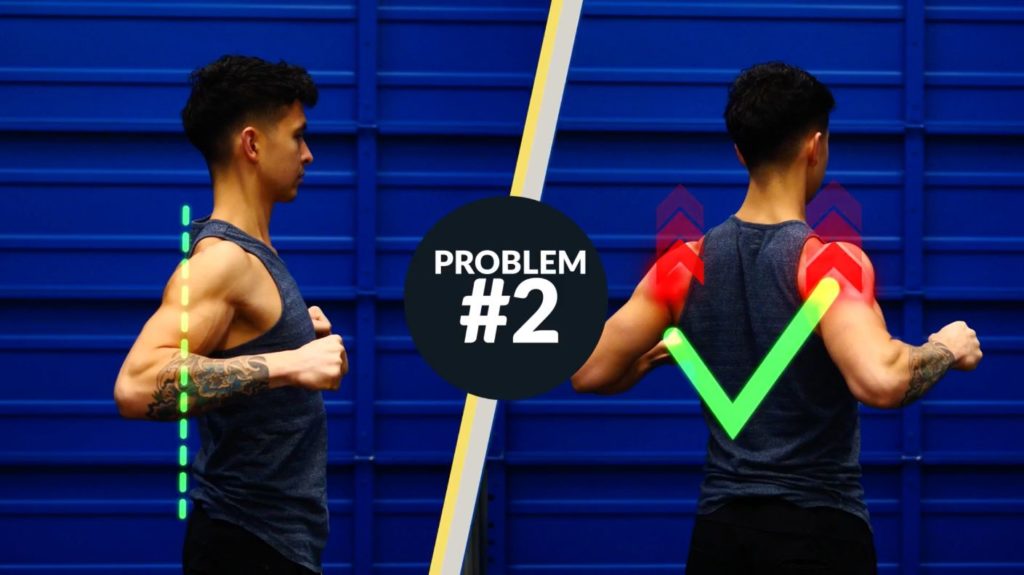
So, to maximally activate the rear delts, we need to find an arm position that:
- Lines up perfectly with the rear delts AND
- Allows the elbows to travel the furthest "behind" the body
Anatomically speaking, this is possible where your upper arm is perpendicular to the spine of your scapula. It's important to note that this position will be slightly different for everyone.
How To Find The Best Arm Position That'll Maximally Activate Your Rear Delts
An easy way to find this position without dissecting your insides is to use a quick test I learned from Coach Kassem. Pull your elbows back as if you were doing a row. Then, do a chicken dance until you find the sweet spot where your elbows feel like they can travel furthest behind your body. For most people, this will be an angle of about 45 degrees away from your body.
And once you’ve found this arm position, you can apply it to pretty much any pulling exercise to instantly make it more rear delts focused. I will be showing you a couple of my personal favorites later on in this article. But some quick examples are to apply this with one-arm dumbbell rows, barbell rows, cable pulls, and more.
Tip 2: Focus On Your Rear Delts During The Last Few Sets Of Your Rowing Movements
So, we've got arm position down. The next two tips will show you how to apply it into your routine to instantly speed up your rear delt gains.
Here's the thing. Most people don’t train their rear delts with enough volume nor with enough effort. They often treat the rear delts as an afterthought towards the end of a workout when they’re already quite fatigued.
To see quick improvements in your rear delt development, here’s my recommendation. Chances are, you’re doing some kind of upper body workout, pull day, or back day in your routine. During these workouts, we can tweak your programming to add some more volume to your rear delts.
How To Make Rowing More Rear Delts Focused
To do so, whenever you do some kind of rowing movement, take the last 1-2 sets and replace them with a rear delt focused row. But if you’re using a cable machine, ditch the narrow V-bar attachment. Trying to use this to hit your rear delts will limit:
- How much you can open up your elbows AND
- How far back they can travel behind the body
Instead, find a wider handle attachment like the lat pulldown one. Wrapping two handles on top of the bar can help make it even better and comfortable. Next, grip the bar wide, and pull your elbows back behind the body. While doing so, you'll want to keep them at the roughly 45-degree angle you found earlier.
Pause at the end of each rep briefly where you should feel a very strong contraction in your rear delts. And repeat.
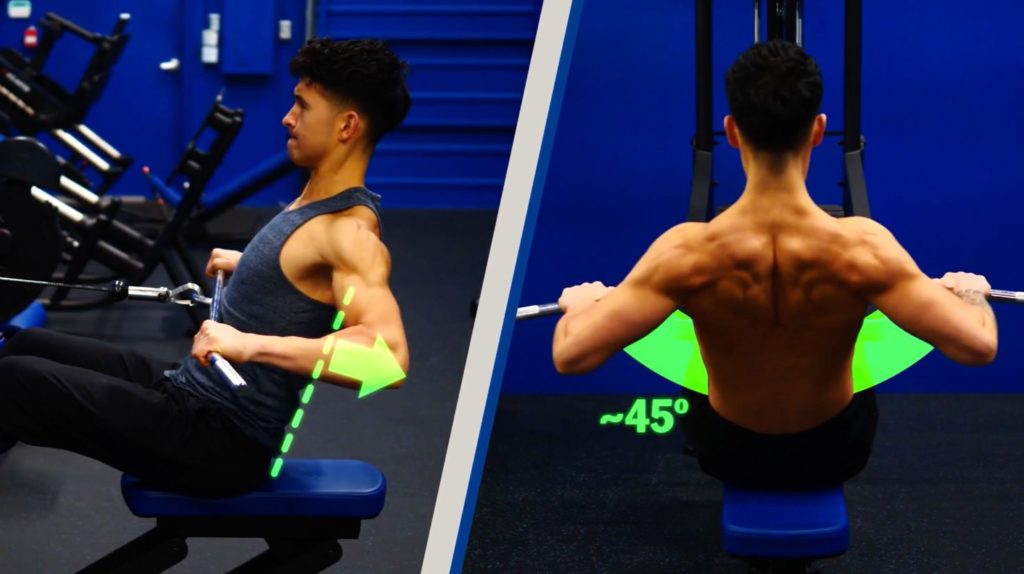
If you don’t have a suitable bar, using a single cable can work as well. And the same can be done on many back machines by using a wider grip and that sweet spot arm angle. If you don’t have access to cables or machines, however, you can always replicate the same movement using bands.
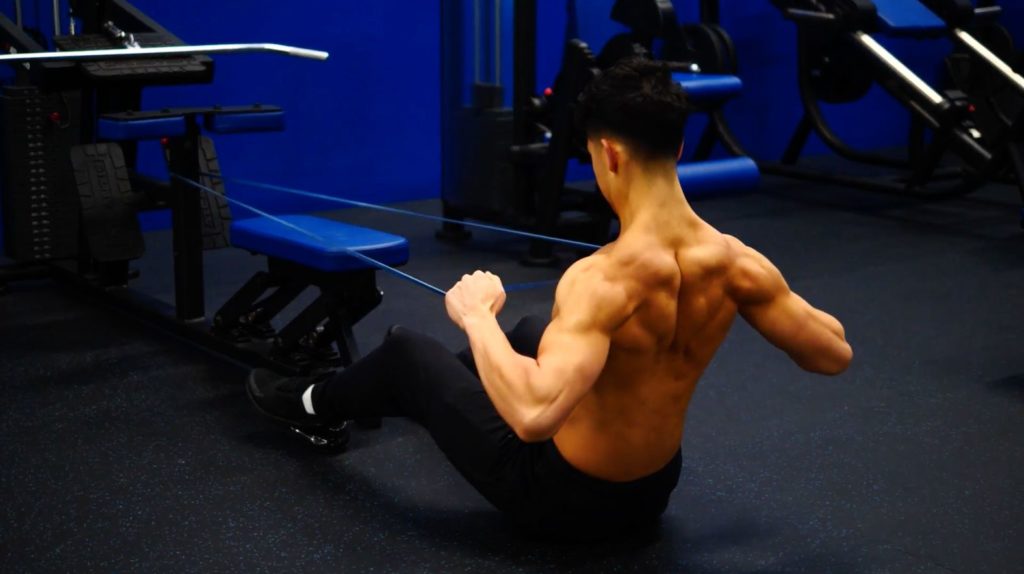
Ultimately, there are always alternatives you could make use of when you're in a pinch. But knowing what these are is a tricky affair. Well, that's why I've designed every BWS program as an informative, all-in-one training program designed to take you from step 1 to ripped - fast. If you're interested:
Click the button below to take my analysis quiz to discover the best program for you:
↓
Tip #3: Focus On Reps, Not Weight
Now, the above simple tweak in your programming (i.e., tip #2) will help ensure you’re working your rear delts while you’re fresh and training them with relatively heavy weights. But in addition to this, you’ll want to also work them with lighter weights focused on quality reps rather than weight. This is where the next tip comes in.
As mentioned earlier, part of the reason why your rear delts may not be growing very well is because of suboptimal exercise selection. But there can also be another reason. And that is: other muscles are taking over because you use too much weight when you train the rear delts.
To avoid this, we’re going to use a more isolation type of rear delts exercise and focus on quality reps.
The exercise I’m about to show you I call the “better reverse fly”. Oh, by the way: this is just one of the several great shoulder exercises I'll be including in an upcoming shoulder article I'm working on - so keep an eye out for when I release it!
So, to perform the "better reverse fly":
- Set up a bench to a 30-degree incline
- Grab a pair of dumbbells, and lay your chest on the bench
- Pull your elbows back as far as you can while keeping them in that roughly 45-degree angle you found earlier.
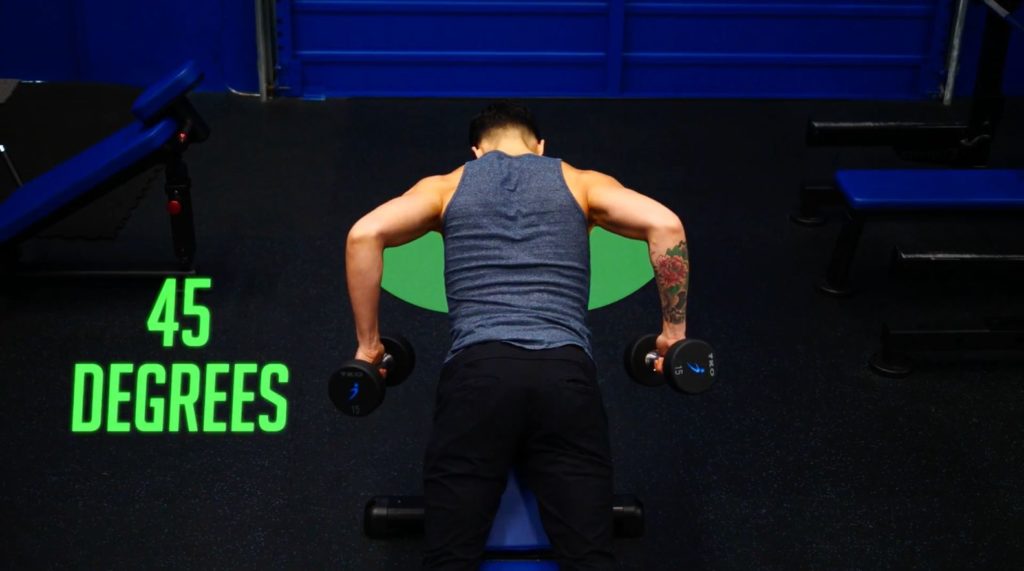
Signs You Need To Ease Up On The Weight
Focus on really feeling the contraction in your rear delts. If you:
- End up feeling more in your traps
- Are unable to pull your elbow back behind the body very far
- Can't maintain that roughly 45-degree arm angle
- Are forced to use momentum
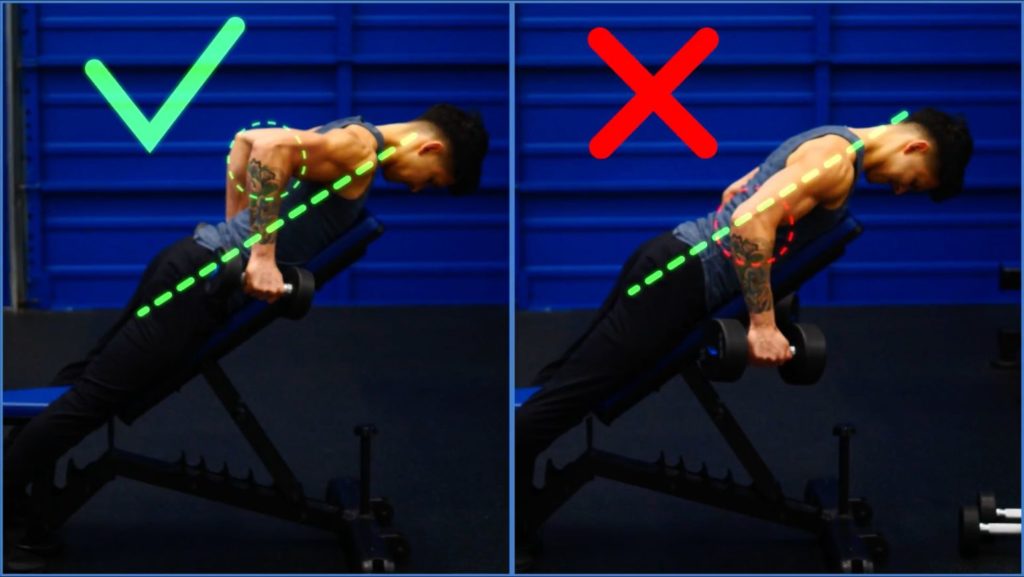
... Then these are all signs that the weight is too heavy for you. If so, lighten the weight. Focus on quality form and really feeling that mind to muscle connection with your rear delts every single rep.
Then, to progress this exercise, we want to avoid increasing the weight too quickly. This leads to having other muscle groups take over the movement. We can prevent this by choosing a light enough weight that allows you to do about 15 reps each set with good form. Then, as you get stronger, focus on increasing your reps up to about 25 reps. Only once you reach that should you then move up to the next heaviest weight and repeat the process.
Takeaway
Implement these 3 tips into your routine, and you’ll not only:
- Feel the difference BUT ALSO
- See the growth very quickly
But, chances are, you're also making similar mistakes with other muscles groups as well. To prevent this from holding you back, just take my free analysis quiz which will determine which of my step-by-step programs will best help you build a body you’re proud of, just like thousands of our members have done, below:
Click the button below to take my analysis quiz to discover the best program for you:
↓
Oh, and before you go ... don't forget to check out some of my past articles here as well:
Thanks for sticking around; I'll see ya next time!


